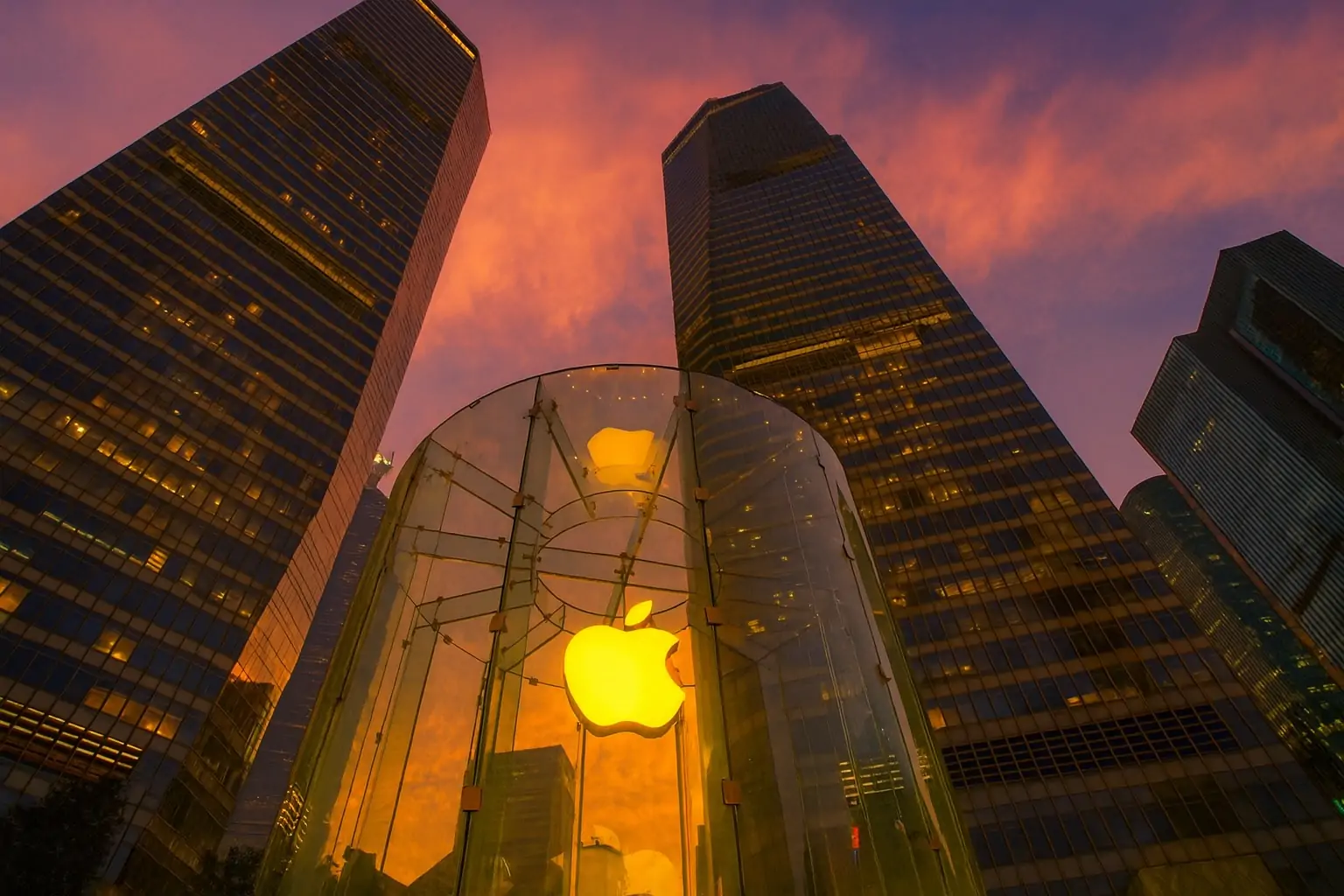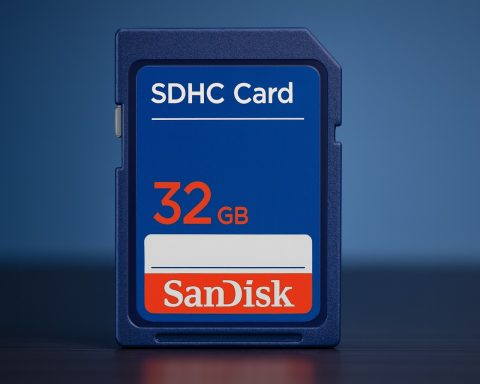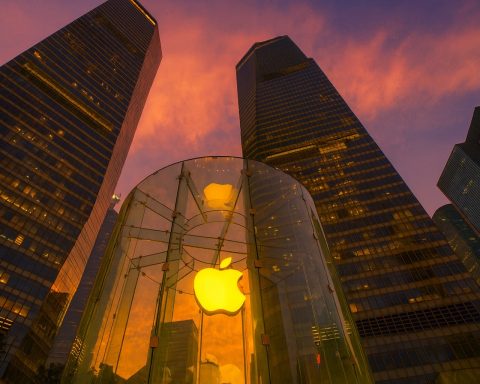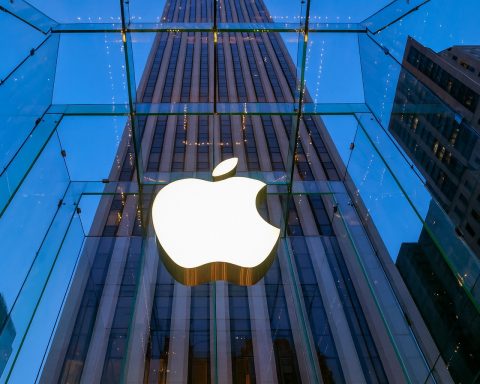Apple shares are trading close to record territory as fresh reports on iPhone 17 demand, supply‑chain investments and a cheaper MacBook concept give investors new reasons to revisit AAPL.
Apple stock price today: AAPL hovering near the top of its range
As trading gets under way on November 20, 2025, Apple Inc. (NASDAQ: AAPL) is coming off a strong session. The stock closed on Wednesday, November 19, at $268.56, up about 0.4% on the day. [1]
At that level:
- Apple is roughly 3% below its 52‑week high of $277.32 and well above its 52‑week low of $169.21. [2]
- Over the last year, the share price has gained around 17–18%, outpacing many mega‑caps but lagging the most aggressive AI winners. [3]
- Apple’s market capitalization sits at about $4 trillion, cementing its place among the world’s most valuable companies. [4]
On fundamentals, recent aggregation of Apple’s financial metrics shows:
- Trailing EPS around $7.46 and a price‑to‑earnings ratio near the mid‑30s based on that figure. [5]
- Other datasets that use a different earnings basis put the P/E above 40x, reflecting the premium investors still pay for Apple’s cash flows. [6]
- A dividend rate of about $1.03 per share annually and a forward yield near 0.4%, with a payout ratio in the mid‑teens. [7]
In short, AAPL enters November 20 trading near record highs, priced as a high‑quality, slower‑growing compounder rather than a deep‑value play.
New catalysts today: cheaper MacBook talk, booming A19 chip orders and Samsung’s US camera chip bet
1. Reported low‑cost MacBook under $1,000
One of today’s most‑discussed Apple headlines comes from a new report, cited via Bloomberg and local coverage, suggesting Apple is developing a lower‑cost MacBook line that could sell for under $1,000. The machines are reportedly expected to use a variant of Apple’s iPhone‑class A‑series chip rather than the higher‑end M‑series silicon used in current Macs. [8]
For investors, a cheaper MacBook raises several questions:
- Upside: It could significantly expand Apple’s addressable market in education and emerging markets, where price‑sensitive buyers often choose Windows PCs or Chromebooks.
- Risks: A very low‑priced Mac might cannibalize higher‑margin MacBook Air and Pro models, pressuring average selling prices and gross margins if not carefully segmented.
- Strategic angle: Re‑using A‑series chips at scale would underscore Apple’s edge in vertical integration and could help amortize R&D costs across iPhone and Mac product lines.
While no launch date or formal confirmation has appeared on Apple’s newsroom yet, the report adds another medium‑term growth lever to the Mac story.
2. iPhone 17 demand triggers A19 & A19 Pro chip order surge
Another key piece of news this week is about explosive demand for iPhone 17 and its impact on Apple’s chip supply chain. A detailed report from Wccftech, citing a well‑followed “mobile chip expert” on Weibo, says Apple has boosted orders for its new A19 and A19 Pro chipsets by an estimated 4–5 million units in just two months. [9]
Key takeaways from that report:
- The A19 family powers the iPhone 17 lineup, including the high‑end Pro and Pro Max models.
- October and November have reportedly seen “blistering” iPhone 17 sales, forcing Apple to ramp chip orders to keep up. [10]
- Apple is believed to be securing more than half of Taiwan Semiconductor Manufacturing Company’s (TSMC) initial 2 nm capacity, helping lock in future supply for next‑generation devices. [11]
This aligns with Apple’s strategy of doubling down on on‑device AI, as the A19 Pro uses TSMC’s latest 3 nm process and significantly beefed‑up Neural Engine resources. [12]
However, the chip boom is not without cost pressure:
- TSMC is reportedly planning 8–10% price hikes for high‑end silicon in 2026, affecting Apple’s A‑series and M‑series chips. [13]
Investors will be watching whether strong iPhone 17 volumes and higher ASPs can more than offset these rising input costs.
3. Samsung’s $1.9B US investment to build Apple camera chips
On the supply‑chain front, Samsung Electronics is planning a US$1.9 billion upgrade to its wafer fabrication plant in Austin, Texas, with the goal of producing Apple’s next‑generation CMOS image sensor (CIS) chips starting in late 2026. [14]
For Apple shareholders, that move matters because:
- It diversifies Apple’s camera sensor sourcing, reducing reliance on any single supplier and region.
- It extends Apple’s push to localize more high‑value components in the United States, a helpful narrative amid political scrutiny of global tech supply chains. [15]
- Camera capabilities are a major differentiator for the iPhone; securing advanced CIS production capacity can support premium positioning and pricing for future flagship models.
Together, the MacBook rumor, A19 order surge and Samsung’s sensor investment provide a supportive fundamental backdrop for Apple’s hardware story going into 2026–2027.
App Store Awards 2025: services and ecosystem strength on display
Also on November 20, Apple has announced the 45 finalists for its 2025 App Store Awards, spanning 12 categories across iPhone, iPad, Mac, Apple Watch, Apple TV and Vision Pro. [16]
The finalists highlight:
- Creativity & productivity apps like BandLab, LADDER and Structured that deepen user reliance on Apple’s platforms. [17]
- Games such as Capybara Go!, Pokémon TCG Pocket and Thronefall that keep engagement high across devices. [18]
- Vision Pro and cultural‑impact categories that showcase Apple’s ambitions in spatial computing and socially impactful software. [19]
While award shortlists don’t move revenue on their own, they underscore a bigger financial story:
- Apple’s services division (App Store, subscriptions, payments and more) is on track to exceed $100 billion in annual revenue, growing at a double‑digit clip and now contributing roughly a quarter of total sales and up to half of profits, according to recent analysis. [20]
That recurring, high‑margin services income is one of the main reasons investors are willing to assign Apple a premium valuation multiple.
Earnings backdrop: a strong fourth quarter still in focus
The latest quarter continues to frame the Apple stock debate.
In late October, Apple reported fiscal fourth‑quarter 2025 results that topped Wall Street expectations: [21]
- Revenue: about $102.5 billion, up roughly 8% year‑over‑year and a new September‑quarter record.
- Earnings per share:$1.85, up around 13% from a year earlier and ahead of consensus estimates.
- iPhone revenue: up about 13–14% year‑over‑year to roughly $44.6 billion, helped by iPhone 17 launch momentum. [22]
- Services: record revenue, growing in the mid‑teens and reaching a new all‑time high. [23]
- Profitability: net margin in the mid‑20s and return on equity near 170%, amplified by years of share buybacks. [24]
These figures helped push Apple back toward its highs in October and underpin the current share price near $270.
Institutional moves and Wall Street’s stance on AAPL
Fresh 13F‑style disclosures published today highlight how professional money managers are repositioning around Apple:
- TRB Advisors LP has trimmed its Apple stake, locking in gains but maintaining exposure. [25]
- Journey Advisory Group LLC also reported a reduced Apple position. [26]
- Conversely, CORDA Investment Management, Crewe Advisors and Klingman & Associates have added to Apple or disclosed it as a top‑10 holding in their portfolios. [27]
Overall, the filings suggest portfolio rebalancing rather than a wholesale rush for the exits. Apple remains a core holding for many diversified equity managers.
On the analyst side, MarketBeat’s compilation shows: [28]
- An average rating of “Moderate Buy”.
- A mix of 3 “Strong Buy,” 22 “Buy,” 11 “Hold” and 1 “Sell” ratings.
- A consensus price target around $278, implying only modest upside from current levels.
Several large brokers — including UBS, JPMorgan, Citigroup and Argus — have raised targets into the $280–$325 range in recent months, reflecting confidence in Apple’s ability to monetize new devices and AI features over the next few years. [29]
At the same time, a fresh analysis on Nasdaq titled “Near Its 52‑Week High, Is Apple Stock a Buy?” notes that Apple’s big 2025 rally has already priced in much of the near‑term good news, and the stock no longer appears in certain “top 10” high‑growth lists from outlets like The Motley Fool. [30]
Regulatory and antitrust overhang: the slow‑burn risk
Despite positive fundamentals, regulation remains one of Apple’s most important long‑term risk factors.
A recent Reuters overview of U.S. Big Tech antitrust cases highlights that the Department of Justice and a coalition of states are suing Apple over alleged restrictions on app makers and third‑party device makers, accusing the company of keeping users locked into the iPhone ecosystem. [31]
Key points from that report:
- Apple’s bid to dismiss the case was rejected in June 2025.
- Discovery deadlines extend into early 2027, with no trial date yet set, suggesting years of legal uncertainty. [32]
Separately, the European Union and UK regulators are scrutinising Apple’s App Store and payments rules, at the same time that Apple’s services revenue has crossed the $100 billion mark and now provides a large share of profits. [33]
If regulators ultimately force Apple to open its platforms more broadly or reduce App Store commissions, the impact would likely fall on the highest‑margin part of the business, which partly justifies today’s valuation.
Market sentiment: defensive mega‑cap or AI laggard?
Investors are far from unanimous about what Apple represents in late 2025.
A widely shared column from 24/7 Wall St., republished on several finance portals this week under the title “Investors Are Sick of Apple,” argues that: [34]
- Despite a strong quarter, Apple stock is up only about 14% year‑to‑date, roughly in line with the broader market.
- Apple is perceived as being behind rivals in visible AI products, with no standalone AI chatbot or cloud platform in the market yet.
- China revenue slipped slightly year‑over‑year, and questions about Tim Cook’s eventual successor are starting to surface.
From this perspective, Apple is a mature, richly valued giant whose best growth years might be behind it.
Other commentators see it differently. A MarketWatch/Morningstar piece this week notes that Apple has held up better than some AI‑heavy peers during tech sell‑offs precisely because it hasn’t been bid up solely as an AI story, giving it a more defensive profile within mega‑cap tech. [35]
Lightyear’s investor brief captures the split:
- Bulls emphasise Apple’s enormous services engine, the potential for AI‑enhanced hardware and software to drive another earnings cycle, and a long track record of beating expectations. [36]
- Bears point to antitrust risks, smartphone saturation, high exposure to China and tariffs, and a starting valuation that leaves little room for error. [37]
Is Apple stock a buy today? Key questions for investors
With AAPL near its highs on November 20, the investment case increasingly hinges on expectations management rather than surprise growth.
Some considerations for anyone analysing the stock:
1. Growth vs. valuation
Apple is currently valued at roughly mid‑30s to low‑40s times trailing earnings, depending on the earnings definition used. [38]
- That multiple assumes steady mid‑single‑digit to low‑double‑digit earnings growth.
- A blowout AI monetisation cycle, a cheaper MacBook that drives volume without killing margins, and sustained services growth could justify it.
- Any stumble — regulatory, macro, or product‑cycle related — could compress the multiple quickly.
2. Hardware momentum
- iPhone 17 seems to be off to a strong start, as evidenced by increased A19/A19 Pro chip orders and supply‑chain capacity moves. [39]
- Rumours of a sub‑$1,000 MacBook and ongoing Mac / iPad refreshes add to the upgrade pipeline. [40]
3. Services and ecosystem
- With services annualising above $100 billion and App Store Awards reinforcing developer loyalty, Apple’s ecosystem lock‑in remains formidable. [41]
4. Long‑term return expectations
Historical returns have been spectacular — one recent analysis notes Apple stock has delivered well over 15,000% gains over the past 20 years — but even bullish commentators warn that future returns are unlikely to match the past from today’s size and valuation. [42]
For many investors, Apple now looks less like a hyper‑growth story and more like a high‑quality, cash‑rich “compounder” whose returns will track a blend of earnings growth, modest multiple shifts and ongoing buybacks.
Bottom line
On November 20, 2025, Apple stock is trading close to all‑time highs, supported by:
- Better‑than‑expected recent earnings,
- Strong iPhone 17 demand and rising A19 chip orders,
- Fresh supply‑chain investments tied to its camera and processor roadmap, and
- A services business that has quietly become a $100‑billion‑plus profit engine.
Against that stand antitrust headwinds, AI‑strategy doubts and a premium valuation that leaves limited room for disappointment.
Whether AAPL makes sense in a portfolio today depends on each investor’s time horizon, risk tolerance and view on Apple’s ability to monetise AI and services over the next decade.
This article is information only and does not constitute investment advice or a recommendation to buy or sell any security.
References
1. stockanalysis.com, 2. lightyear.com, 3. www.investing.com, 4. lightyear.com, 5. lightyear.com, 6. www.marketbeat.com, 7. lightyear.com, 8. www.jpost.com, 9. wccftech.com, 10. wccftech.com, 11. wccftech.com, 12. chipwise.tech, 13. www.tweaktown.com, 14. www.digitimes.com, 15. www.iclarified.com, 16. www.apple.com, 17. www.moneycontrol.com, 18. www.moneycontrol.com, 19. www.business-standard.com, 20. www.ft.com, 21. www.apple.com, 22. www.macrumors.com, 23. www.ft.com, 24. www.marketbeat.com, 25. www.marketbeat.com, 26. www.marketbeat.com, 27. www.marketbeat.com, 28. www.marketbeat.com, 29. www.marketbeat.com, 30. www.nasdaq.com, 31. www.reuters.com, 32. www.reuters.com, 33. www.ft.com, 34. 247wallst.com, 35. www.morningstar.com, 36. lightyear.com, 37. www.reuters.com, 38. lightyear.com, 39. wccftech.com, 40. www.jpost.com, 41. www.ft.com, 42. finance.yahoo.com









